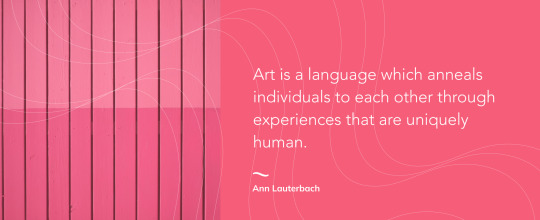#humanexperiments
Explore tagged Tumblr posts
Quote
the discovery that 20 of the 35 photographs in the book "The Devil's Gluttony(written by Seiichi Morimura)" which was the catalyst for Unit 731's infame, were not of live human experiments but rather photographs of the Kwantung Army treating plague patients in Manchuria between 1910 and 1911.
Unit 731 China's infamous fabrication - kaiunmanzoku's bold audible sighs
0 notes
Video
youtube
Human experiments
0 notes
Text

In "Stories of Stigma", author Greg Hitchcock explores the deeply personal and societal impacts of stigma, offering a raw and poignant look into the lives of those affected. Through compelling narratives, Hitchcock challenges perceptions and promotes understanding. Don't miss this thought-provoking work that dives into the complexities of human experience.
Discover more about Greg Hitchcock and his impactful writings at https://www.pegasusdigitalmedia.com/about.
9 notes
·
View notes
Photo

Dive into "Hidden Whispers," my 2019 piece that captures the intricate tension of human emotions 🌊. With soft brushwork and warm tones, it contrasts isolation with connection, embodying love, pain, and hidden truths. Let the figures reveal their stories. 🎭✨
5 notes
·
View notes
Text
"Echoes of the Soul"
It is what it is, We experience bad days and good days, Just like a clock ticking away each day, Same time, different days, different weather, But the same air, land, and atmosphere.
We often wonder when our struggles will end, The life we have, the end days, When will our last day arrive, The day we leave this world behind, The day we return our bodies to the land?
The day we bid farewell to our loved ones, Our broken and beaten memories, And the sadness that lingers, From afar, this world may seem beautiful, But poverty and war threaten our existence.
What does the afterlife hold for us? Are we perishing forever, or will we live again? Will we find joy after leaving this world, Or does it all end in the grave? Is there an afterlife?
Father, provide us with answers to these profound questions.
#Mortality#Afterlife#ExistentialCrisis#LifeStruggles#HumanExperience#Poetry#FreeVerse#SpokenWord#EmotionalExpression#DeepThoughts#Hope#Resilience#Faith#InnerStrength#PersonalGrowth
4 notes
·
View notes
Text
Embers at First Light: A Child’s Rage
Inspired by Dylan Thomas’ “Do not go gentle into that good night”Personal adaptation of Dembe Zuma’s Final Monologue
A shared destiny. With silent certainty, death awaits us all. Death’s significance is inherently dissolved by the inevitability of fate’s call. What truly matters? Our relentless search; what we pursue, what we discover. how to heal, how to love, how to grow. How we Live. We cherish these children, more than anyone will ever know. Their remarkable refusal to go quietly into that good night. Their fight for life. A fight in spite. Imposed by dusk in countless ways, yet fiercely committed to the day’s embrace. When confronted by the silence of twilight, they defy in rage. The rage of life, To rage against the dying of the light. A blaze to capture moments of peace, play, and joy. Their journey—an innocent and curious endeavour to explore life with an unwavering passion—is perhaps the most profound path one can take. Inconceivable that their spark would fade—freed of wake, into that good night. Our time with them, our time together, is never about an ending. It is always about the odyssey, about discovery, about a child’s everlasting reminder—showing us, imploring us; to rage. Do not play gentle in this fight. Rage. Tend the embers of their bright light. Rage, rage and ignite—
#Poetry#SpokenWord#DylanThomas#LiteraryAnalysis#ExistentialThoughts#DeathAndLife#Fate#Timeless#Philosophy#CreativeWriting#EmotionalWriting#Inspiration#ArtOfWords#ReflectiveWriting#LifeAndDeath#RageAgainstTheDyingOfTheLight#Literature#MeaningOfLife#PoeticVision#ChildhoodWonder#LifeLessons#Journey#Healing#Love#Joy#Adventure#HumanExperience#FindingMeaning#Courage#the blacklist
3 notes
·
View notes
Text
we humans
we humans are constantly intertwined body and soul because our hands are constantly outstretched. we can't help but spread our fingers and open our palms, our hands were made for love. why else would your fingers interlock with mine and never really let go not even if you forget me. not even if we both fade out together. we humans are built to facilitate love we have no maximum capacity, if I love you I will always love you. and if you love me, you'll think of me fondly when you hear my favourite song.
#wehumans#human#humans#humanexperience#humancontact#love#touching#hands#intertwined#iwillalwaysloveyou#favouritesong#thinkofmefondly#connection#humanconnection#poetry#amaturepoet#youngpoet#poets#youth
3 notes
·
View notes
Text
The Quiet Journey of Becoming
From the moment he was born, the boy was a picture of innocence, wide-eyed and curious, with a smile that could light up a room. His early years were filled with wonder and discovery—his tiny hands grasping at everything, exploring the world around him with the unfiltered enthusiasm of childhood. He learned to crawl, then walk, and talk, to dream, and every new experience seemed like an adventure, from the first taste of rain to the feel of soft grass underfoot. His days were filled with games of make-believe, simple joys, and the safety of his parents’ love.
As adolescence approached, the boy began to change. His body grew taller, more awkward, and his face became a battleground for shifting emotions. The world around him, once so simple, became complicated. His friendships deepened, but so did his struggles. He was torn between the carefree days of his childhood and the growing expectations of the adult world. Adolescence brought challenges: the pressure of school, the storm of first loves, and the confusion of identity. He tested boundaries, rebelled against authority, and grappled with a desire for independence that sometimes felt suffocating. Yet, there was also a sense of discovery—of finding his place in the world and the people who would walk alongside him.
In his twenties, adulthood settled in with its promise of new beginnings. He found a job that gave him purpose, though it also demanded sacrifices. There were moments of uncertainty, but his determination propelled him forward. Relationships evolved, too—friendships that had once been carefree began to shift into deeper connections, and the idea of family took root in his heart. He met someone who would become his partner, and together they built a life, navigating the highs and lows of marriage, parenting, and responsibility. Fatherhood changed him in profound ways. He could no longer just live for himself; there were others to consider, dependents who needed him. Career milestones arrived, as did moments of doubt, but the boy, now a man, carried on, driven by the sense that life was a blend of dreams and reality.
Years turned into decades. In his thirties, he made a home for his growing family, built relationships, and accumulated memories. By his forties, he found a rhythm in life, balancing work, home, and personal growth. But with time, the restlessness of youth gave way to a deep sense of purpose. In his fifties, he faced the inevitable truths of aging—his body no longer moved with the same ease, and his mind no longer raced with the same urgency. Yet, he found peace in the slower pace. His children had grown, and now he saw them forging their own paths. His career, once a source of ambition, now gave way to mentorship and reflection. He had more time to savor quiet moments with loved ones, less need for constant action, more appreciation for the simple beauty of life.
Old age arrived, as inevitable as the seasons changing. His hair grayed, his movements slowed, but his heart grew lighter with wisdom. The world had shifted under his feet, but he had weathered the storms. The memories of youth, of raising children, of early love and late nights of hard work, now played like a beautiful film in his mind. The man he had become was no longer the boy who ran through fields or the rebellious teenager who sought to break free. He was someone who understood the value of stillness, of time well spent with those who mattered most. He looked back with satisfaction, not with regret, knowing that he had lived fully. In his last years, there were moments of sorrow, loss, illness, and the understanding that life was fleeting—but there was also gratitude for having witnessed the ebb and flow of life, and for leaving behind a legacy of love, memories, and lessons passed down to the next generation.
And as he sat in his favorite chair, the view of a sunset reminding him of his childhood wonder, he smiled, knowing the boy he once was had led him to the man he had become—a man at peace with the passage of time.
#LifesJourney#ComingOfAge#StoryOfUs#EmotionalGrowth#FromBoyToMan#HumanExperience#LifeReflections#TimePasses#AgingGracefully#NarrativeWriting#WritersOfTumblr#CharacterGrowth#PoeticProse
0 notes
Photo

When you cry, nobody sees your tears. When you’re hurt, nobody sees your pain. When you’re sad, nobody sees your sorrow. But fart just once..
Featuring You Apple MacBook Skin
#InspirationalQuotes#LifeTruths#RealityCheck#DeepThoughts#NobodyCares#LifeStruggles#UnseenPain#HumanExperience
0 notes
Text

We Own Nothing, Yet We Have It All By LazyMoon Part-01
#We Own Nothing#Yet We Have It All#By LazyMoon#WeOwnNothing#LifeReflections#Poetry#ExistentialThoughts#Mindfulness#LifeAndDeath#ChasingDreams#Heartache#PhilosophyOfLife#EmptyHands#Afterlife#HumanExperience#TruthInWords#PoetryOfTheSoul#LifeJourney#WeHaveItAll#LettingGo#SelfReflection#EmotionalJourney#TheMeaningOfLife#LifeAndLove#PersonalGrowth#Existence#LiveInTheMoment#LoveAndLoss#LifeQuestions
1 note
·
View note
Text
Chilling Story from Karaza | Intruders, Netflix, and Ice Cream | Israeli Trailblazers Show
youtube
A surreal and disturbing tale from the residents of Karaza, who were hiding in terror for their lives as intruders from Gaza, not militants but civilians, occupied their home—streaming Netflix, having ice cream from their freezer, and settling in as if the house was their own.
#shockingstory#realstories#survival#unexpected#fearandchaos#humanexperience#eyewitness#bizarreevents#unbelievable#trueevents#Youtube
0 notes
Text

Art is a language which anneals individuals to each other through experiences that are uniquely human. http://dlvr.it/TJryw6
0 notes
Photo

What’s something that seems trivial today that people might cherish in the future?
#AuthenticConnections#FutureCherish#MeaningfulMoments#CreativityInWorkspace#TrivialToTreasure#SpringVibes#HumanExperience#WorkplaceHarmony#CaptureTheMoment#InspirationEveryday#ConnectGenuinely#MotivationDaily#ExploreTogether#InnovateAndCreate#PositiveChange#CommunityMatters#GrowthMindset#CollaborationOverCompetition#FutureFocused#EmbraceTheJourney
0 notes
Text
Croissants n' Arms
On the 18th of May in 2018, Margaret Flowers had just turned 73. She decided to make pastries for her grandchildren—a couple of them students at Santa Fe High School—as she knew, they would be coming over later that evening.
She was beyond excited to give them these snacks, as evident from the large smile she had on her face waking up.
She woke up early at around 6 am, went to her little cottage kitchen, where she made her cottage food she sold at markets! She egan to pull and gather various ingredients—off shelves and out of cabinets.
At around this same time, seventeen year old Dimitrios Pagourtzis was finally commencing his plans. He was barely halfway to eighteen. No one would ever expect this… he was on the football team and he joked around with some friends the day before…
He knew the laws well, he was honor roll. It’s… uncertain why he began to pack his bags with the 12-gauge Remington and the .38-cal Rossi he ordered from the internet.
I mean—FedEx even delivered without an adults signature, months back. Just coz, he managed to order from some store and click, ‘no adult signature needed!’
And, now it’s 7 am…
Mrs. Flowers had spent a while meticulously meting out each ingredient.
Separating them into small bowls, she took her time to slowly add each part, croissants take time.
She stored the ingredients in the refrigerator and, around 7:30, she was ready to start the process of yeast activation.
She knew her grandson was getting ready to go to art class, and she was beyond excited to prepare the croissants that he called his faves.
Warm water, Fleischmann’s, and sugar… where was the sugar?
She dug all through her cabinets, and in the first few minutes, came up flat.
Where was it? She asked herself.
At 7:32 am—Dimitrios had begun singing “Another One Bites The Dust”, spraying scatter shot all around the door of an art classroom.
He broke the window with a shot… then opened the barricaded door.
Inside, and mostly unknown to him, were several young men and women— alongside two teachers.
Well… mostly unknown… because the first person he happened to encounter in the art classroom… was a student he did know—and to which he said, “surprise”, firing the 21-gauge in their chest.
He ran into a few cops before heading into the ceramics room hallway. They shot at each other, the cops being injured and the kid getting to the hallway.
In the ceramics room, he encountered another cop and they were able to injure Dimitrios.
The cops having managed to injure Dimitrios’ pride—got him to surrender.
Still sadly—ten died and fourteen were injured.
After about thirty minutes of looking, Mrs. Flowers did finally find that sugar she so desperately needed.
She thanked God for that!
Little note:
If you have read this story, we hope the message is clear. While we aren’t condemning the rightful ownership of weapons, we are condemning the attitude that our democracy has facilitated in regards to justice versus rights.
Everyday in our country we fight for our rights, and everyday in our country someone could be fighting for their life. This is why we should all try better to understand the delicate topic of lethal force and better understand these warnings.
Regardless of warnings the future is scary… and just like always before, there is still the human factor.
As much as we fight for our own equal rights, for the most part, we are all at mercy to the whims of someone else.
This is why, we must all be careful when it comes to our lives and definitely to these weapons.
We can try tp control our own lives.
Other people have control over theirs—who is to say, they might not try to interrupt or manipulate yours?
#speculative fiction#horror#liminal reality#humanexperience#gunshot#life#school shooters#introspection#philosophy#selfreflection#empathy
0 notes
Text
Experiencing Life Through My Eyes
I am here simply to experience human life on Earth—through the eyes of César, through his memories, his tastes, his scents, textures, and emotions. Whether in small details or grand moments, everything is part of this vast and immeasurable universe. This is how I see and feel life today, here on Earth.
#HumanExperience#LifeOnEarth#MindfulLiving#SoulPerspective#SpiritualReflections#Existence#SensoryExperience#EmbracingLife#LivingInTheMoment#blog#gay#quote#angel#dear diary#selfdiscovery#healing#personalgrowth#mindfulness#awakening
0 notes
Text

copyrightⓒ 2025 All rights reserved by TheOnlyUniverse
과거는 잊으려고 할 수는 있지만 결코 지워지지는 않습니다.
#과거#기억#역사#역사왜곡#태아#아기#머리#전쟁범죄#731부대#생체실험#2차세계대전#마루타#삼일��#31절#단하나의우주#주#Past#Memories#History#DistortionOfHistory#UnbornChild#Baby#Head#WarCrime#TheSecondWorldWar#Unit731#HumanExperiment#Maruta#Samiljeol#IndependenceMovementDay
0 notes